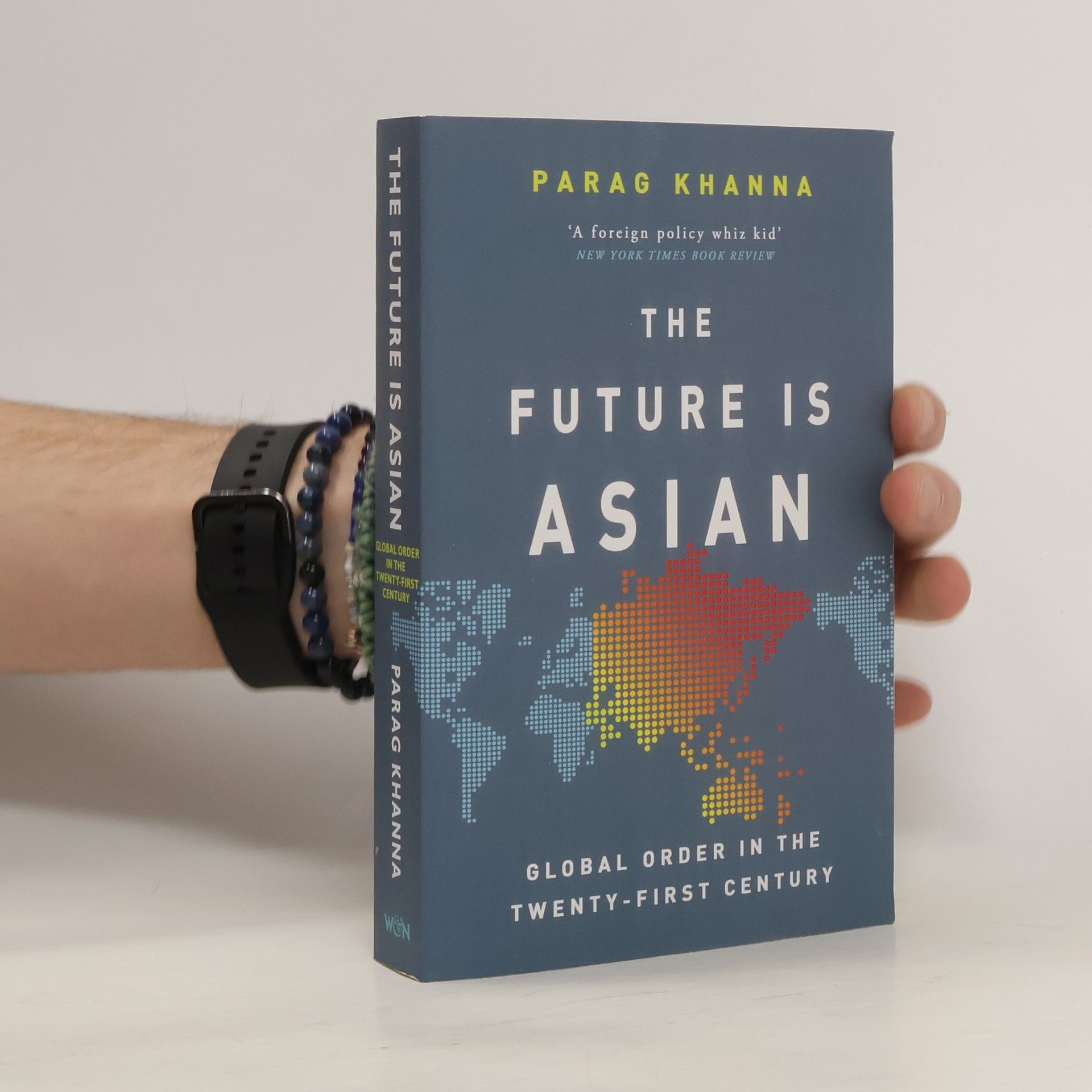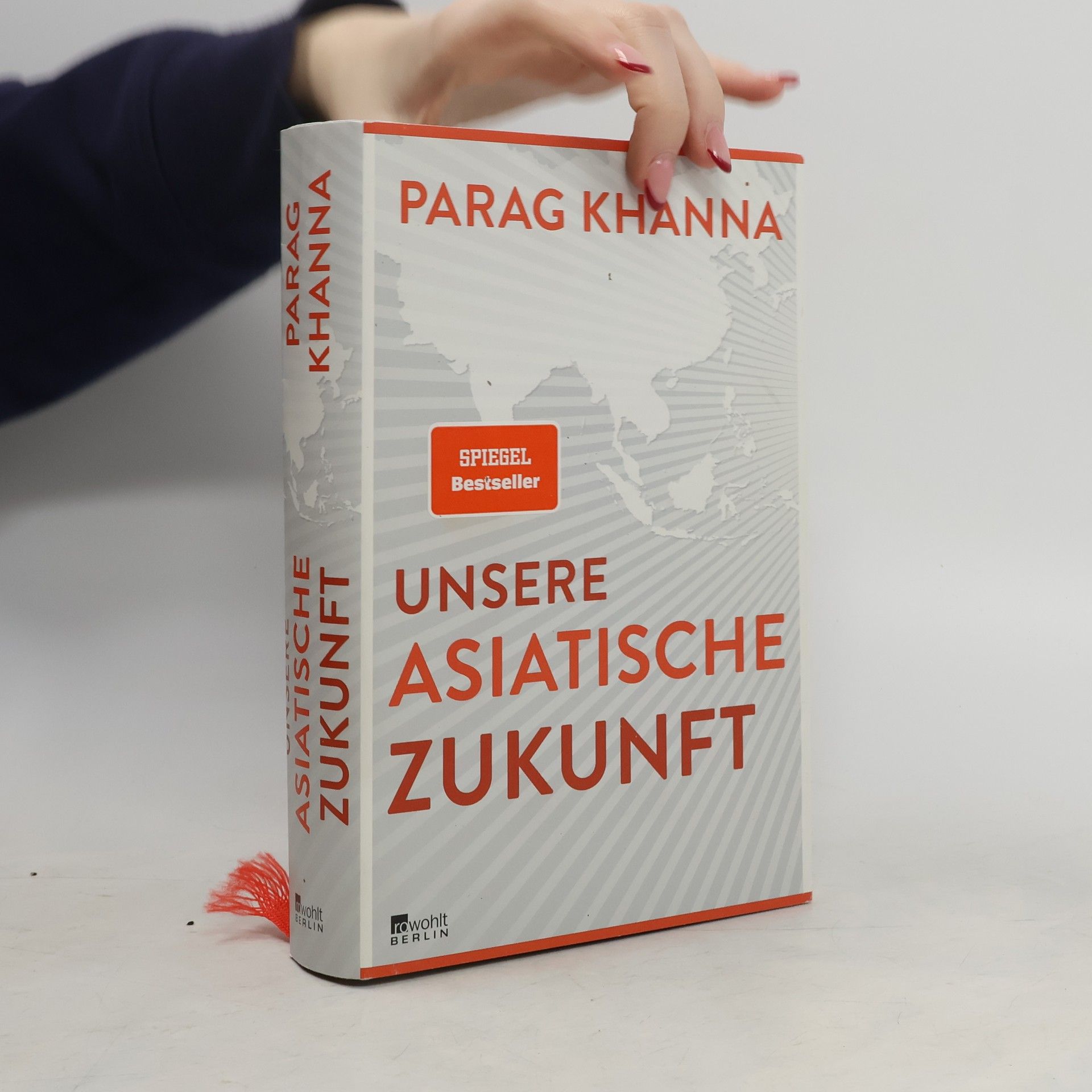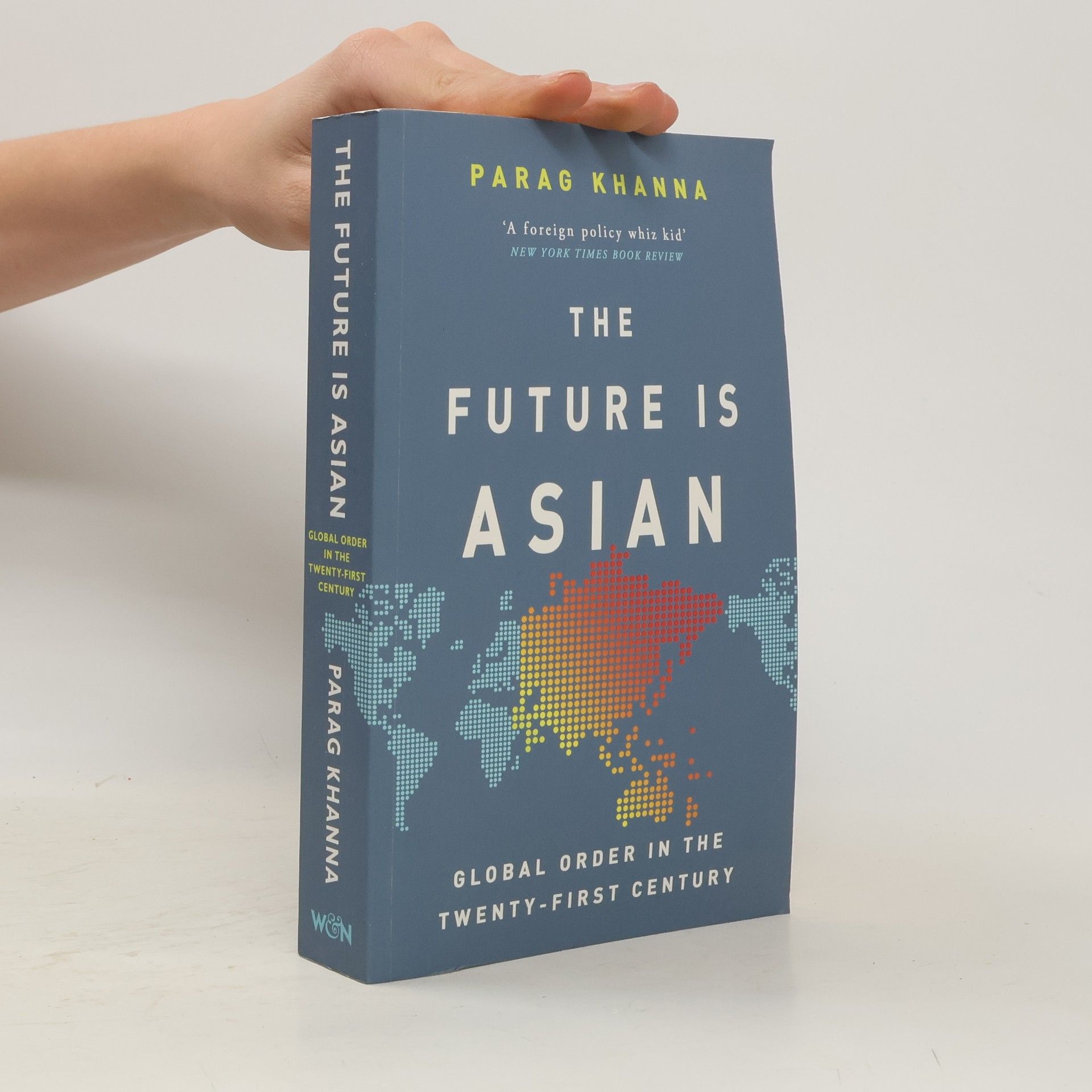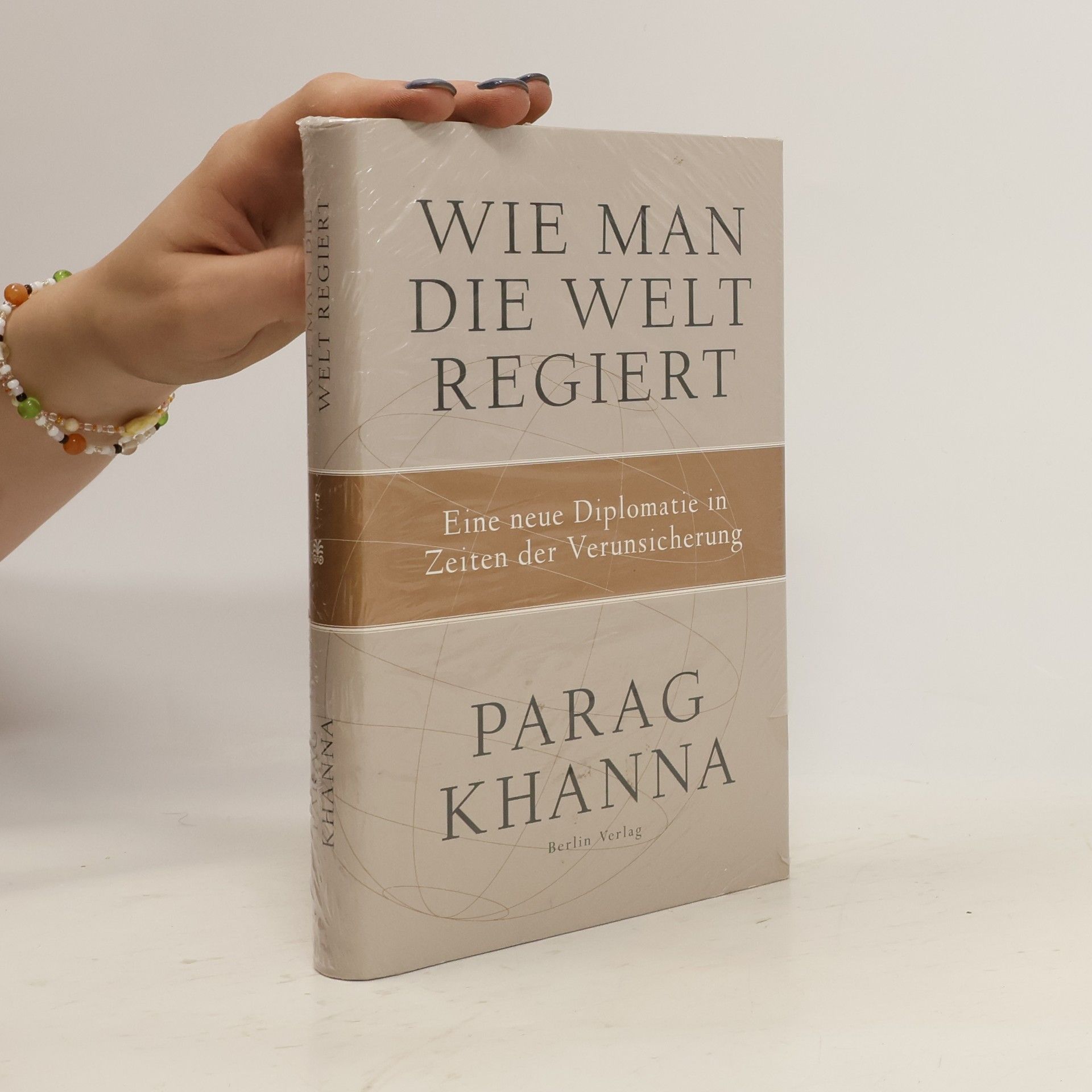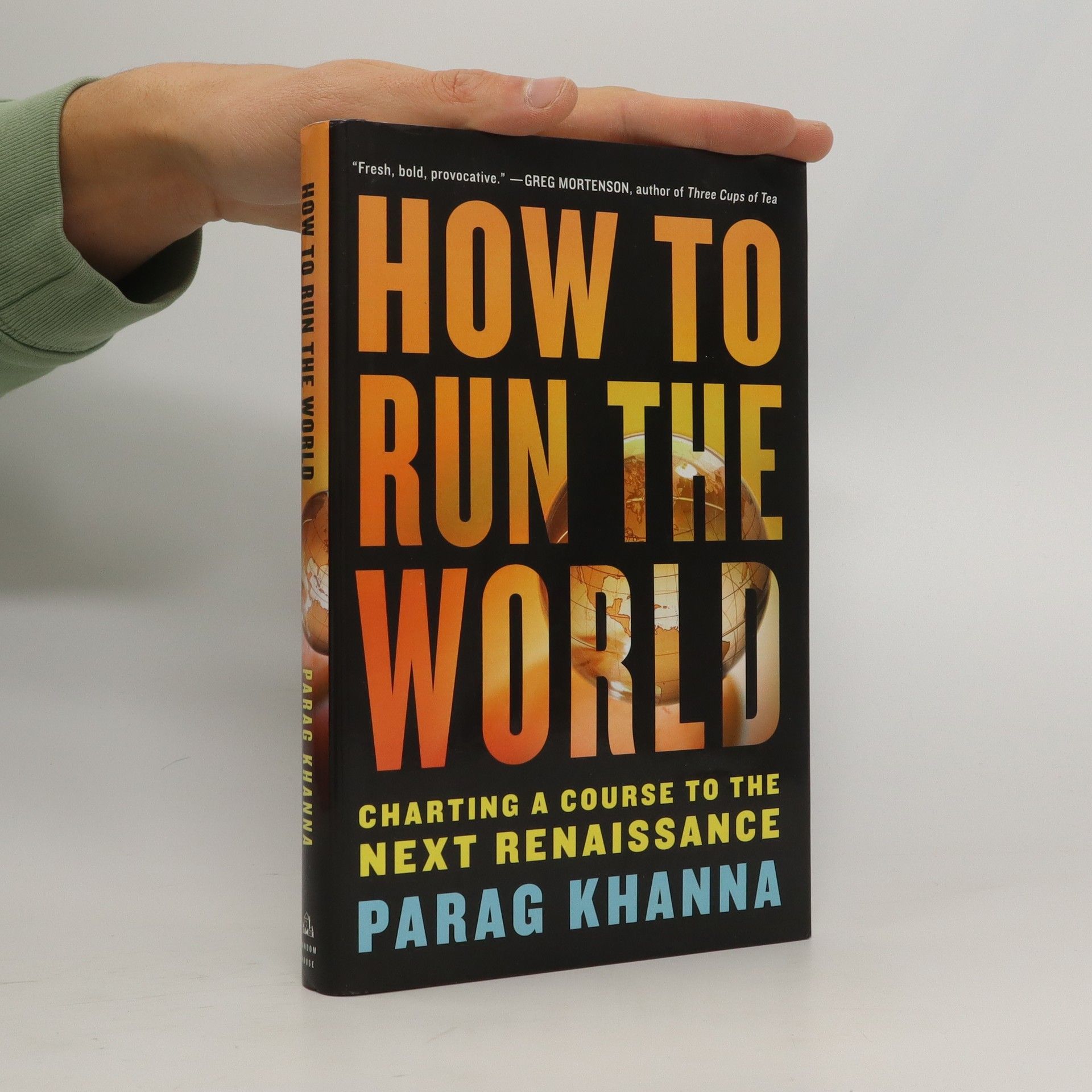Where will you live in 2030? Where will your children settle in 2040? What will the map of humanity look like in 2050? Mobility is a recurring feature of human civilisation. Now, as climate change tips toward full-blown crisis, economies collapse, governments destabilise and technology disrupts, we're entering a new age of mass migrations - one that will scatter both the dispossessed and the well-off. Which areas will people abandon and where will they resettle? Which countries will accept or reject them? As today's world population, which includes four billion restless youth, votes with their feet, what map of human geography will emerge? In Move, global strategy advisor Parag Khanna provides an illuminating and authoritative vision of the next phase of human civilisation - one that is both mobile and sustainable - while guiding each of us as we determine our optimal location on humanity's ever-changing map.
Parag Khanna Ordine dei libri
Parag Khanna è un pensatore visionario il cui lavoro esplora a fondo le tendenze globali e la direzione strategica del mondo. Attraverso la sua società di consulenza, analizza scenari futuri utilizzando dati, offrendo profonde intuizioni sulle complessità delle relazioni internazionali e sullo sviluppo futuro. La sua vasta esperienza di viaggio e la sua formazione accademica gli consentono di offrire prospettive uniche sull'interconnessione del nostro mondo moderno. Le analisi di Khanna sono cruciali per comprendere le sfide e le opportunità che plasmano il nostro futuro.

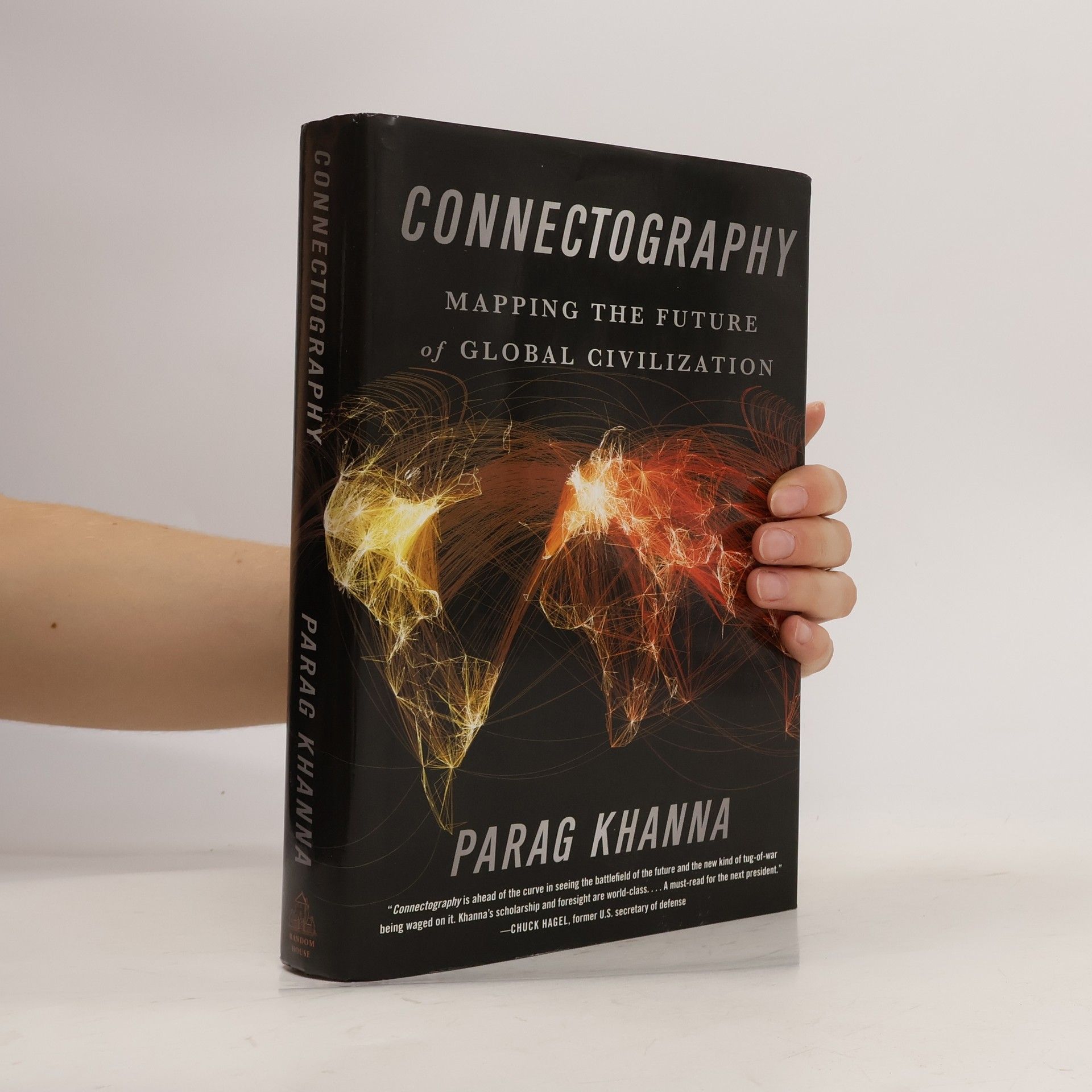




- 2021
- 2021
In diesem Buch eröffnet uns Parag Khanna, indisch-amerikanischer Politikwissenschaftler und in Singapur lebender Vordenker, einen anderen, neuen Blick auf die Welt. Er bringt Geschichte, Politik und die natürlichen Lebensbedingungen des Menschen, die sich gerade rasant verändern, zusammen und leitet daraus Voraussagen für die Zukunft ab. Seine Grundthese: Die Menschheit wird sich in den nächsten Jahrzehnten neu auf der Erde verteilen (müssen). Gebiete, die bislang von der Natur bevorzugt wurden, drohen unbewohnbar zu werden; alte Industrieregionen, die Millionen von Menschen angezogen haben, werden veröden, neue Zentren entstehen. All dies wird nicht auf ein Land beschränkt sein, sondern zum weltweiten Phänomen. Die Gründe, die Khanna für riesige Migrationsströme über die Kontinente hinweg sieht, sind vielfältig: von demographischen Schieflagen und unterschiedlichen Modernisierungsgeschwindigkeiten über Klimaveränderungen bis zu sich neu verteilenden Arbeitsmöglichkeiten. Die Menschen werden, ob aus Zwang oder freiwillig, in kaum vorstellbarer Weise «on the move» sein. Faktenreich, mit anschaulichen Beispielen und überzeugendem Zahlenmaterial entwirft Khanna die «Zivilisation 3.0», in der Mobilität unser aller Schicksal, ja die Signatur der Zeit sein wird.
- 2019
The Future Is Asian
- 320pagine
- 12 ore di lettura
Five billion people, two-thirds of the world's mega-cities, one-third of the global economy, two-thirds of global economic growth, thirty of the Fortune 100, six of the ten largest banks, eight of the ten largest armies, five nuclear powers, massive technological innovation, the newest crop of top-ranked universities. Asia is also the world's most ethnically, linguistically and culturally diverse region of the planet, eluding any remotely meaningful generalization beyond the geographic label itself. Even for Asians, Asia is dizzying to navigate. Whether you gauge by demography, geography, economy or any other metric, Asia is already the present - and it is certainly the future. It is for this reason that we cannot afford to continue to get Asia so wrong. The Future Is Asian accurately shows Asia from the inside-out, telling the story of how this mega-region is coming together and reshaping the entire planet in the process.
- 2019
Das 19. war das europäische, das 20. das amerikanische Jahrhundert – und das 21. wird das asiatische Jahrhundert sein. Asien heißt heute: viereinhalb Milliarden Menschen, zwei Drittel der Megacitys unseres Planeten, zwei Drittel des weltweiten Wirtschaftswachstums, Tendenz weiter steigend. Die Verschiebung der globalen Machtverhältnisse wird die Welt verändern und, wo es nicht schon so weit ist, bald alle Bereiche unseres Lebens beeinflussen. Dennoch haben wir, wie Parag Khanna zeigt, weder eine Vorstellung davon, was das konkret für uns bedeutet, noch kennen wir überhaupt diesen riesigen, vielfältigen Kontinent, der nicht nur aus China und Japan besteht – es sind nicht zuletzt die technologisch längst führenden Länder Südostasiens, etwa Indonesien oder Singapur, von denen wesentliche Impulse ausgehen werden. Parag Khanna schildert, wie sich die Welt gegenwärtig neu ordnet und was uns im asiatischen Jahrhundert erwartet. Deutschland und Europa müssen ihre Chancen erkennen und nutzen, und das nicht nur wirtschaftlich. Auf längere Sicht geht es, so Khanna, um eine kulturelle und politische Synthese von West und Ost: von Liberalismus und Holismus, Demokratie und Technokratie. Ein oft überraschender, geopolitisch wie kulturell weitsichtiger Blick in unsere asiatische Zukunft.
- 2019
The future is Asian : global order in the twenty-first century
- 448pagine
- 16 ore di lettura
Five billion people, two-thirds of the world's mega-cities, one-third of the global economy, two-thirds of global economic growth, thirty of the Fortune 100, six of the ten largest banks, eight of the ten largest armies, five nuclear powers, massive technological innovation, the newest crop of top-ranked universities. Asia is also the world's most ethnically, linguistically and culturally diverse region of the planet, eluding any remotely meaningful generalization beyond the geographic label itself. Even for Asians, Asia is dizzying to navigate.Whether you gauge by demography, geography, economy or any other metric, Asia is already the present - and it is certainly the future. It is for this reason that we cannot afford to continue to get Asia so wrong. Our Asian Future accurately shows Asia from the inside-out, telling the story of how this mega-region is coming together and reshaping the entire planet in the process.
- 2016
Which lines on the map matter most? Imagine a map of the world in your mind. Now erase all the borderlines. Now replace those borderlines with new lines connecting regions. Those new lines represent motorways, bridges, tunnels, railways, oil pipes, supply chains and electricity grids - in a word, connectivity. In Connectography, Parag Khanna argues that a global network civilization is emerging, based around increasing connectivity between nations, cities, companies and people that political states as represented on a traditional world map are becoming redundant. He travels from Ukraine to Iran, Mongolia to North Korea, London to Dubai and the Arctic Circle to the South China Sea - all to show how twenty-first-century conflict is a tug-of-war over pipelines and internet cables, advanced technologies and market access. A world in which the most connected powers, and people, will win. But beneath the chaos of a world that appears to be falling apart is a new foundation of connectivity pulling it together.
- 2016
Connectography
- 466pagine
- 17 ore di lettura
"Mankind is reengineering the planet, investing up to ten trillion dollars per year in transportation, energy, and communications infrastructure linking the worlds burgeoning megacities together. This has profound consequences for geopolitics, economics, demographics, the environment, and social identity. Connectivity, not geography, is our destiny. Khanna argues that new energy discoveries and technologies have eliminated the need for resource wars; ambitious transport corridors and power grids are unscrambling Africas fraught colonial borders; even the Arab world is evolving a more peaceful map as it builds resource and trade routes across its war-torn landscape. At the same time, thriving hubs such as Singapore and Dubai are injecting dynamism into young and heavily populated regions, cyber-communities empower commerce across vast distances, and the worlds ballooning financial assets are being wisely invested into building an inclusive global society. Beneath the chaos of a world that appears to be falling apart is a new foundation of connectivity pulling it together." --
- 2011
Die Welt steht laut Khanna am Beginn eines neuen Mittelalters: einer langen, unruhigen Epoche mit ständig wechselnden Machtkonstellationen, wirtschaftlicher Unsicherheit und einer Vielzahl schwelender Konflikte. Nicht nur die großen globalen Fragen wie Klimawandel, Terrorismus und atomare Bedrohung übersteigen in ihrer Komplexität die Leistungsfähigkeit der herkömmlichen Staatendiplomatie. Auch weiter zunehmende ethnisch-religiöse und kriegerische Auseinandersetzungen vor allem in Afrika und Asien oder die Bewältigung humanitärer Katastrophen erfordern veränderte, zeitgemäßere diplomatische Methoden und Instrumentarien. Parag Khanna eröffnet eine grundlegend neue Sicht auf die politische Landkarte der Gegenwart. Und er zeigt, warum es für das Krisenmanagement der Zukunft maßgeblich auf die neuen Mitspieler im Feld der Geopolitik ankommen wird: NGOs mit ihrem problemspezifischen Know-how, Großunternehmen mit der Wirtschaftskraft ganzer Staaten, einflussreichen Weltbürgern wie Bill Gates und George Soros - und potenziell jeden einzelnen Teilnehmer der medialen Öffentlichkeit. Parag Khannas neues Buch ist ein Plädoyer für einen radikal erweiterten Diplo - matie-Begriff und eine scharfsinnige Gegenwartsdiagnose: provokant, pointiert, pragmatisch. Und bei aller politischen Brisanz auch ein intellektuelles Vergnügen.
- 2011
How to Run the World
- 256pagine
- 9 ore di lettura
Outlines a provocative approach to diplomacy that addresses the needs of today's globalized world, covering issues ranging from economic imbalance and environmental stress with recommendations for specific actions to unify the resources of governments, corporations and civic groups.
- 2009
The Second World
- 496pagine
- 18 ore di lettura
At the end of the Cold War, we found ourselves living in a world with one superpower, the United States. This title argues that the moment of American supremacy is over, brought about by the increasing influence of what he terms the Second World: Eastern Europe, Central Asia, South America, the Middle East and East Asia.

